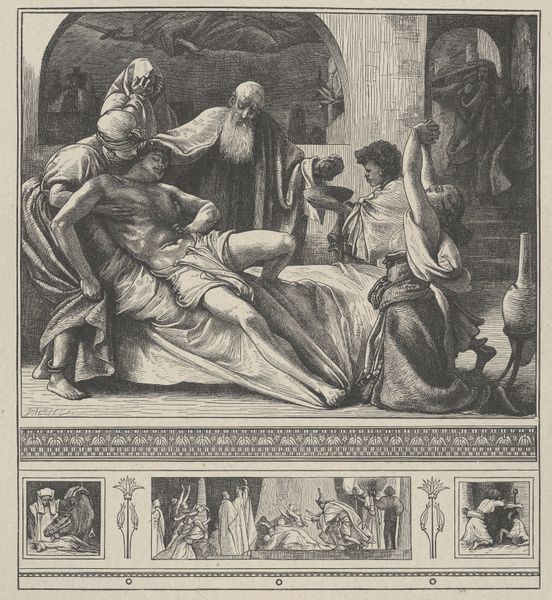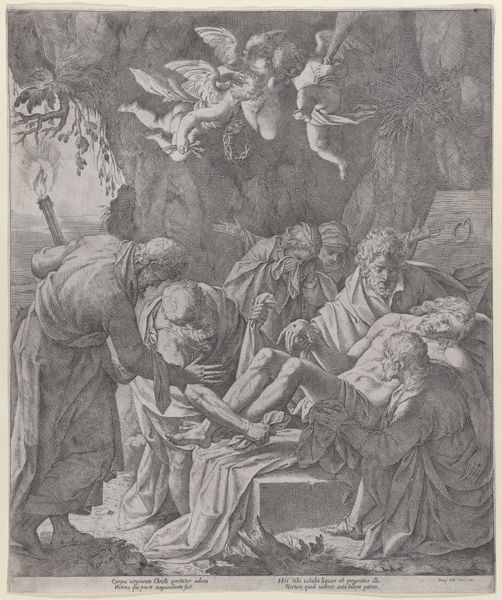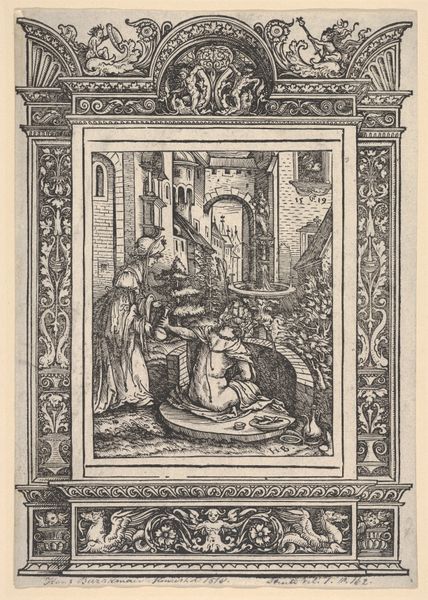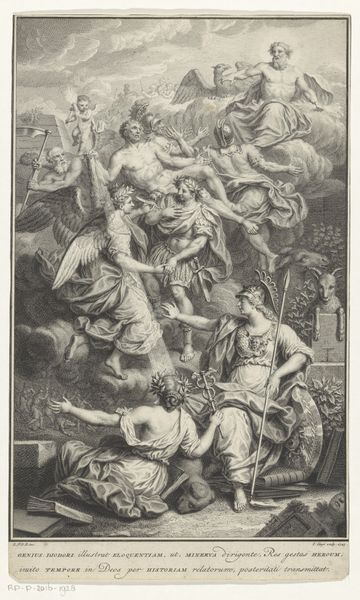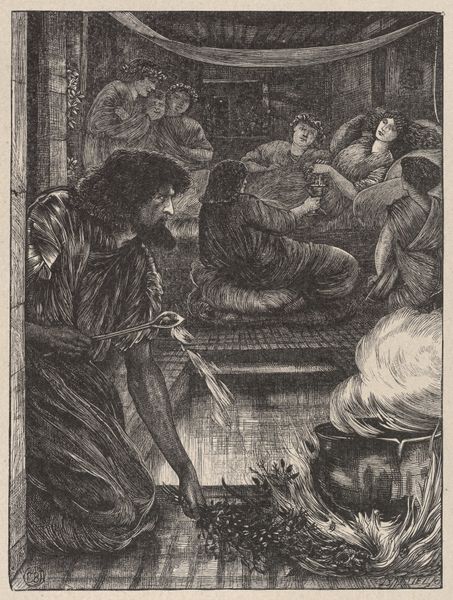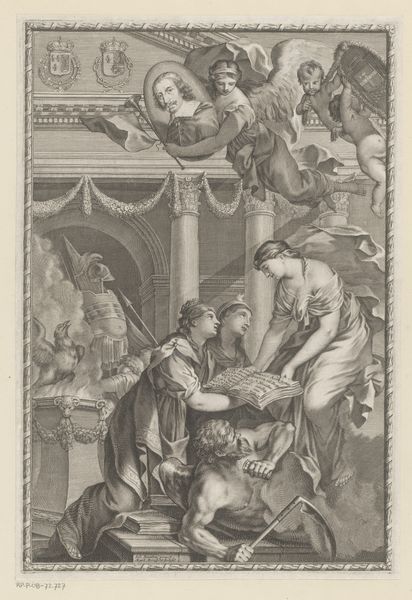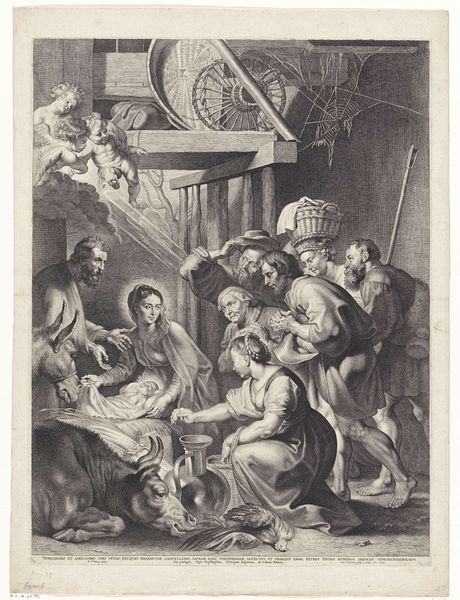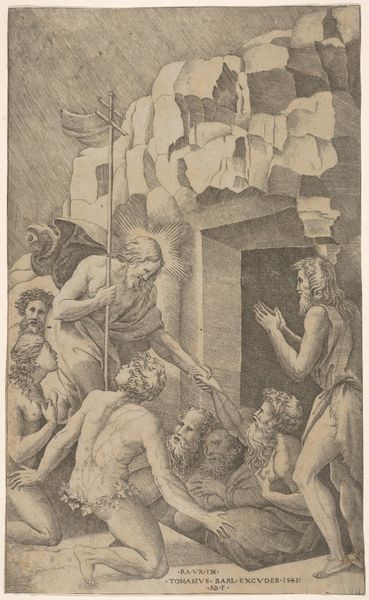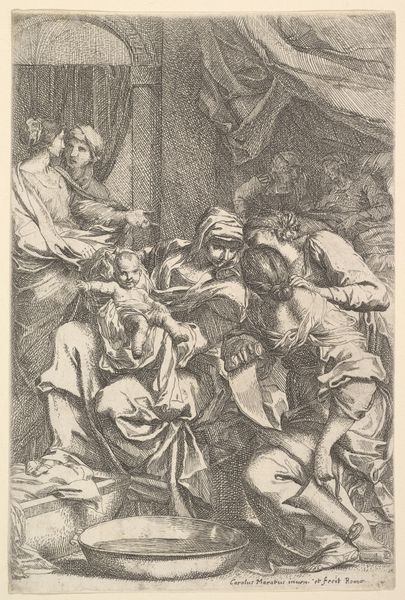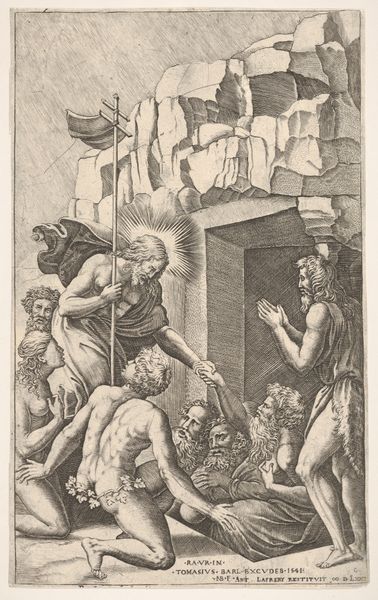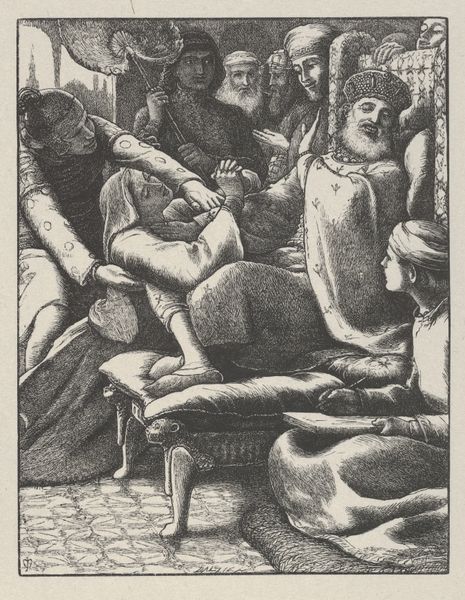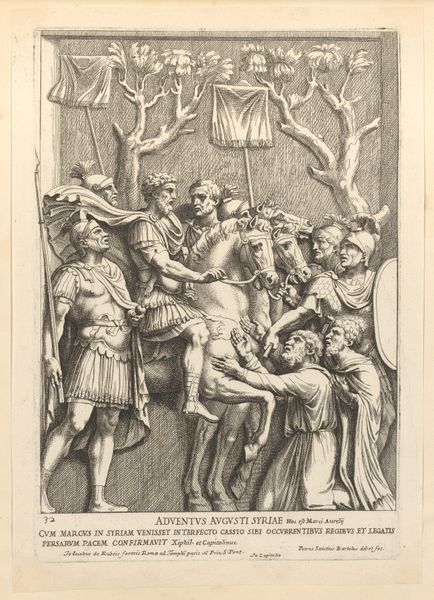
print, woodcut, engraving
#
medieval
#
narrative-art
# print
#
old engraving style
#
woodcut
#
history-painting
#
engraving
Dimensions: 155 mm (height) x 118 mm (width) (bladmaal)
Editor: This is H.C. Henneberg's "Amleds forstillelse og hævn" from 1852, currently housed at the SMK. It's a striking engraving and woodcut. The narrative split into two scenes really grabs you. What do you make of it? Curator: This print encapsulates the 19th-century fascination with medieval history and the use of art to construct national narratives. Consider how Henneberg uses visual cues to align the viewer with a particular understanding of Danish history. Do you notice any specific imagery that reinforces this sense of historical legitimacy or cultural identity? Editor: Well, the dragons at the bottom are certainly evocative of medieval imagery, but the characters also remind me of figures in Shakespeare's "Hamlet". It is more about myth-building than literal historical accuracy? Curator: Exactly. Henneberg isn’t just illustrating a story; he's actively shaping a public understanding of Danish heritage, linking it to both Norse mythology and international cultural capital via Shakespeare. Think about the role prints played in disseminating these national narratives. They were widely accessible, shaping public opinion in ways that paintings, often restricted to elite circles, couldn't. Editor: So the choice of print medium is as important as the subject matter? It’s not just about the tale of Amled, but about who gets to see it and how it frames their understanding of Danish history. Curator: Precisely! And where this print was displayed or published would heavily influence its reception, guiding who got to participate in that narrative. Editor: This makes me rethink my initial impression. It’s not *just* a striking image; it’s a calculated piece of cultural propaganda. Thank you! Curator: Indeed, seeing art as part of the cultural and political landscape is crucial to understanding its power.
Comments
No comments
Be the first to comment and join the conversation on the ultimate creative platform.
